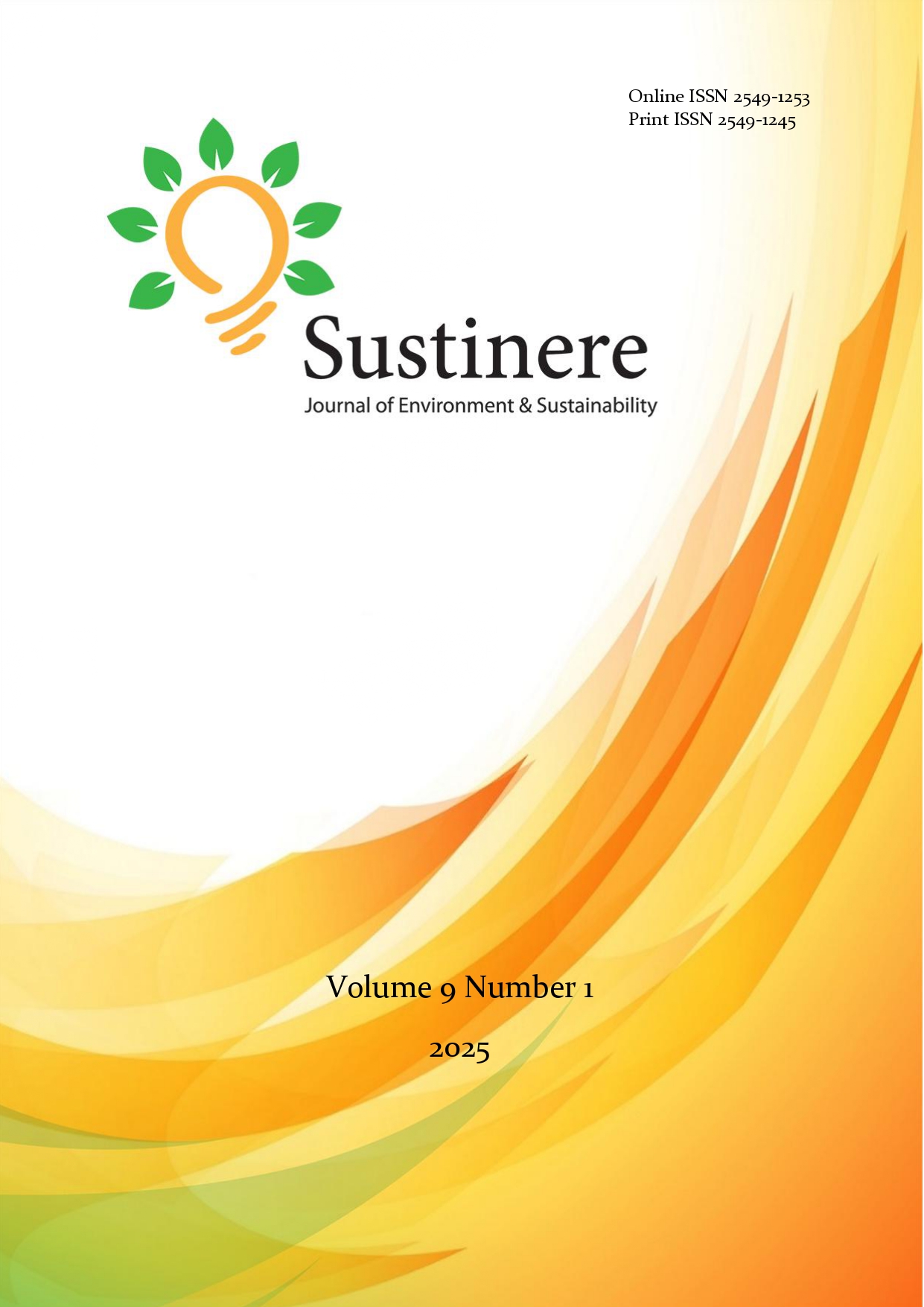Revitalization of nipa thatch as sustainable roofing material at Sekolah Alam Balikpapan
Main Article Content
Abstract
Nipa as thatch roofing material originates from leaves of nipa palm tree (Nypa fruticans). Although nipa has a long history in Southeast Asia, it has gradually been replaced by other materials. Nature school (sekolah alam), a relatively new education model established in Indonesia in 1998, offer a different approach to school facilities, one of which is the use of open-air classroom buildings. Balikpapan Nature School, located in island of Borneo, is one of many institutions developing the nature-based school concept. The school has adopted the Dayak Kenyah longhouse design, incorporating nipa thatch roofing in its buildings. However, one of the buildings has had its nipa roofing replaced with bitumen. This research investigates the heat gain characteristics of nipa roofing as a sustainable material in comparison to bitumen roofing. Analysis of the observational data using paired t-test shows a significant difference, with nipa roofing effectively reducing heat gain. These supports findings support previous studies that have identified nipa as an environmentally friendly material capable of providing better thermal comfort in humid tropical climates.
Article Details

This work is licensed under a Creative Commons Attribution-NonCommercial-ShareAlike 4.0 International License.
Anggota Jaringan Sekolah Alam Nusantara. (n.d.). Peta Jaringan Sekolah Alam Nusantara. https://maps.jaringansekolahalam.id/dashboard/maps.php
Astuti, D. (2018). Masjid Wapauwe, kekokohan konstruksi dalam kesederhanaan bentuk. Seminar Ikatan Peneliti Lingkungan Binaan Indonesia (IPLBI), 2, 18–023. https://doi.org/10.32315/sem.2.c018
Carandang, M. G., Camacho, L. D., Carandang, A. P., Camacho, S. C., Gevaa, D. T., Rebugio, L. L., & Youn, Y. (2009). Sustainable thatching materials production from Nipa (nypa fruticans) in Bohol, Philippines. Forest Science and Technology, 5(1), 17–22. https://doi.org/10.1080/21580103.2008.9656343
Cheablam, O., & Chanklap, B. (2020). Sustainable Nipa Palm (Nypa fruticans Wurmb.) Product utilization in Thailand. Scientifica, 2020. https://doi.org/10.1155/2020/3856203
Djamaluddin, R., Djabar, B., & Kaumbo, M. A. (2023). Atlas Sebaran Populasi Mangrove Nipah dan Estimasi Potensi Nira Nipah di Sulawesi Utara. Unsrat Press.
Ginting, A. M., & Anita, S. B. (2020). Sejarah perkembangan masjid raya Kota Pematangsiantar 1911-2017. Warisan: Journal of History and Cultural Heritage, 1(1), 27–36. https://doi.org/10.34007/warisan.v1i1.168
Heal, A., Paradise, C., & Forster, W. (2006, September 6). The vernacular as a model for sustainable design. PLEA2006. The 23rd Conference on Passive and Low Energy Architecture, Geneva.
Kaamin, M., Ab Rahman, R., Suwandi, A. K., Kesot, M. J., & Razzaq, A. R. A. (2013). Kajian alternatif mengurangkan suhu rumah beratap zink di waktu tengahari. In Proceeding of the International Conference on Social Science Research, Penang, MALAYSIA.
Kindangen, J. I., Rogi, O. H. A., & Rompas, L. M. (2024). Using mMetroxylon sagu leaves as a roof material for thermal comfort in humid tropical buildings. Results in Engineering, 22, 101999. https://doi.org/10.1016/j.rineng.2024.101999
Malik, A. (2012). Arsitektur Tradisional Melayu Kepulauan Riau. Lembaga Adat Melayu Kabupaten Natuna Provinsi Kepulauan Riau.
Mulyati, A., & Sarwadi, A. (2011). Nilai-nilai lokal pada tipologi rumah tinggalpermukiman perairan di Sulawesi Tengah. In Antariksa, G. W. Pangarsa, & A. M. Nugroho (Eds.), Seminar the Local Tripod: Akrab Lingkungan, Kearifan Lokal, dan Kemandirian. Universitas Brawijaya.
Oliver, P. (2006). Built to Meet Needs: Cultural Issues in Vernacular Architecture. Architectural Press.
Prayitno, J. (2021). Biaya produksi pembuatan atap daun nipah (Nypa Fruticans) di Loa Janan, Kutai Kartanegara. Buletin Loupe, 17(01), 62–66. https://doi.org/10.51967/buletinloupe.v17i01.505
Rahman, K.-S., Rahman, M. M., Dana, N. H., Adib, A., Masud, A.-A.-, Hossain, Md. T., Rakkibu, M. G., Adhikary, N., Debrot, A. O., & Islam, M. N. (2024). Nypa-based land uses and ecosystem services in the tropics: A review. Ecological Indicators, 159, 111613. https://doi.org/10.1016/j.ecolind.2024.111613
Rumiati, A., & Prasetyo, Y. H. (2013). Identifikasi tipologi arsitektur rumah tradisional Melayu di Kabupaten Langkat dan perubahannya. Jurnal permukiman, 8(2), 78-88.
Safar, M. (2021). Sekolah Alam Legacy: Tribute to Lendo Novo. Salamuda Creative.
UNEP-WCMC (2025). Ocean Habitats. Available at: habitats.oceanplus.org https://doi.org/10.34892/w2ew-m835
Steger, C. (2023). A roof of one’s own: Choice and access in global thatch sustainability. World Development Sustainability, 3, 100088. https://doi.org/10.1016/j.wds.2023.100088
Umar, M. Z., & Arsyad, M. (2017). Prinsip-Prinsip Arsitektur Berkelanjutan pada Material Atap Daun Sagu. Seminar Nasional Inovasi Dan Aplikasi Teknologi Di Industri, E23.1-E23.6.
Umar, M. Z., Suhartiwi, I. A., Fitrah, A., & Zamiul. (2018). Identifikasi kearifan lokal masyarakat Bajo dalam membuat atap daun nipah. Vitruvian, Jurnal Arsitektur, Bangunan, dan Lingkungan, 7(3), 145–150.
Victoria, J., Mahayuddin, S. A., Zaharuddin, W. A. Z. W., Harun, S. N., & Ismail, B. (2017). Bioclimatic design approach in Dayak traditional longhouse. Procedia Engineering, 180, 562–570. https://doi.org/10.1016/j.proeng.2017.04.215
Wazir, Z. A. (2018). Tipologi Atap pada Arsitektur Vernakular di Sumatera Selatan. Jurnal Arsitektur Dan Perkotaan KORIDOR, 9(1), 161–174. https://doi.org/10.32734/koridor.v9i1.1329
Widodo, P., Sukarsa, Herawati, W., Hidayah, H., Chasanah, T., & Proklamasiningsih, E. (2020). Distribution and characteristics of nypa palm (Nypa fruticans wurmb.) in Southern part of Cilacap Regency. IOP Conference Series: Earth and Environmental Science, 550(1), 012010. https://doi.org/10.1088/1755-1315/550/1/012010

